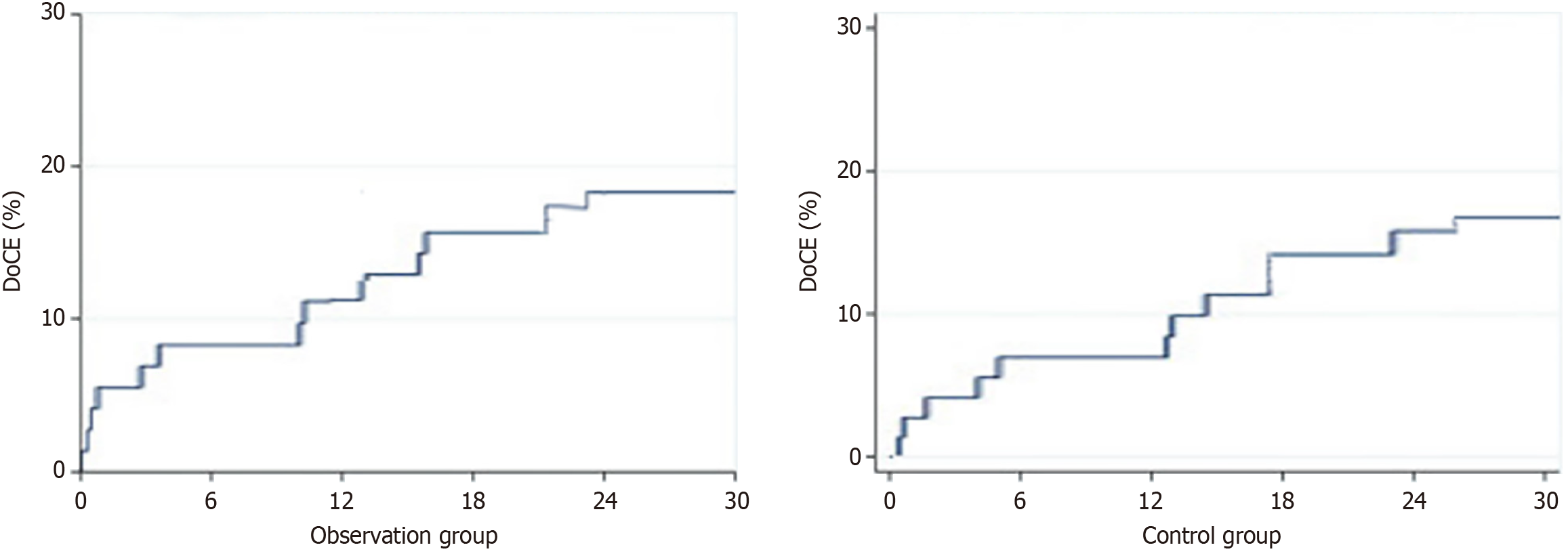Copyright
©The Author(s) 2025.
World J Cardiol. Nov 26, 2025; 17(11): 109287
Published online Nov 26, 2025. doi: 10.4330/wjc.v17.i11.109287
Published online Nov 26, 2025. doi: 10.4330/wjc.v17.i11.109287
Figure 1 Kaplan-Meier curves of reaching the device-oriented composite endpoint at 30 months in the observation group and the control group.
DoCE: Device-oriented composite endpoint.
Figure 2 One-year follow-up after left anterior descending artery stenting: Evidence of restenosis and aneurysmal dilatation.
A: Coronary angiography at admission showed stenosis in the proximal segment of the left anterior descending branch; B: Successful opening of the vessel after implantation of the left anterior descending branch, with thrombolysis in myocardial infarction flow grade 3; C: Follow-up coronary angiography at one year showed 50%-70% stenosis in the proximal and middle segments of the anterior descending branch. Discontinuous blood flow and incomplete lesion coverage were observed during the angiography, with some vessels exhibiting tumor-like dilation. White arrow: Stenotic site.
- Citation: Li J, Li XR, Kong MW, Zhang J. Medium-to-long term outcomes of bioresorbable scaffold treatment in patients with acute coronary syndrome. World J Cardiol 2025; 17(11): 109287
- URL: https://www.wjgnet.com/1949-8462/full/v17/i11/109287.htm
- DOI: https://dx.doi.org/10.4330/wjc.v17.i11.109287














